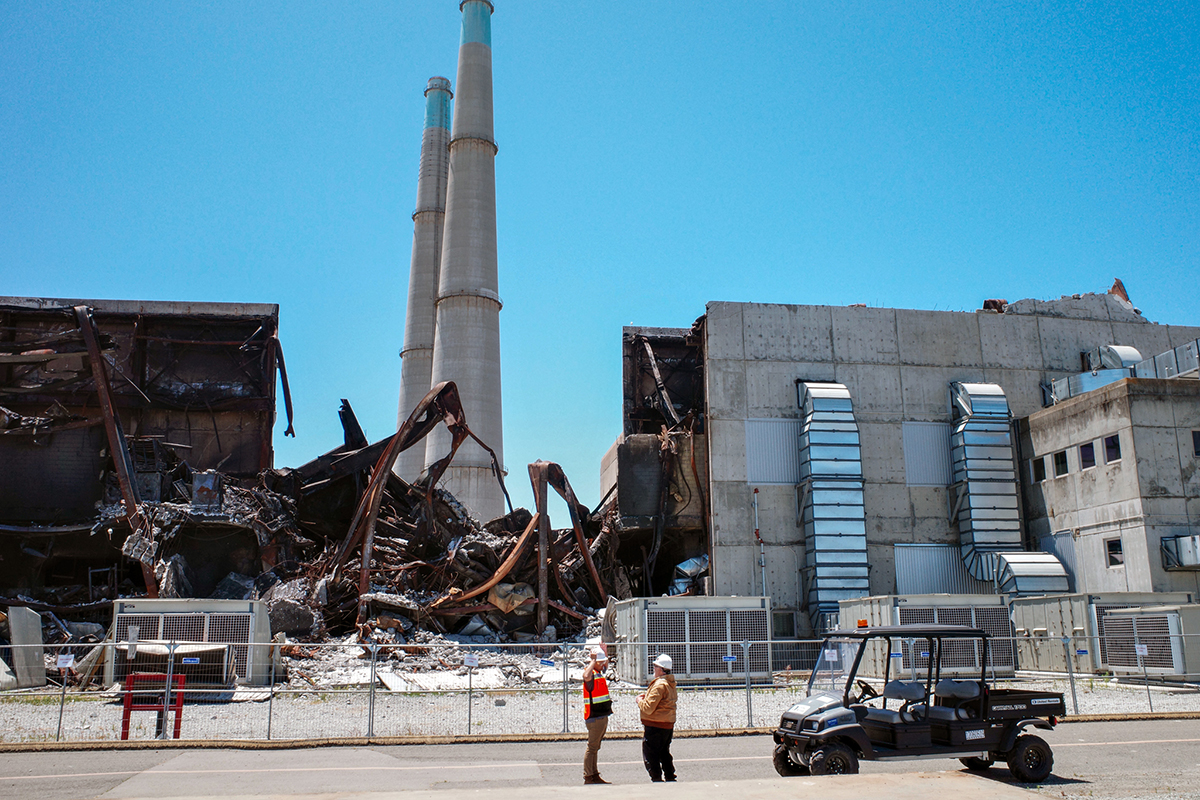
Cleanup efforts have been initiated in Moss Landing, California, where a thermal runaway incident destroyed a Vistra facility in January. | Photo courtesy of EPA
As lithium-ion battery fires increasingly threaten recycling facilities and landfills nationwide, the US EPA is preparing to undertake its largest lithium-battery remediation efforts to date.
On Sept. 29, workers removed the first set of batteries from the Moss Landing 300 building. The cleanup is related to a massive thermal runaway incident that occurred at energy company Vistra Corp’s 300-megawatt battery energy storage facility on Jan. 16, 2025.
The California facility housed nearly 100,000 lithium-ion battery modules, of which 55% were damaged. The EPA, fire response units and local agencies continued battling the blaze for two days until it was contained. A flare-up caused further damage on Feb. 18.
“After months of careful planning and prep work by our experts to safely execute this unprecedented lithium-ion battery cleanup, the removal of potentially dangerous batteries begins,” said EPA Pacific Southwest Region Superfund and Emergency Management Director Mike Montgomery, in a statement.
Vistra agreed to remediation and removal obligations with the EPA in July. The efforts required Vistra, under EPA’s watch, to follow detailed, agency-approved plans, add safety measures to protect residents and workers during cleanups and participate in community involvement activities to “enable meaningful public engagement throughout the removal process.”
“We have been working for the last few months to design battery removal procedures that prioritize worker safety, community needs, environmental protection and battery stability,” Vistra stated in an update on its website. “After receiving EPA input and approval of the procedure, workers were trained on it and conducted physical run-throughs of the work process to remove a portion of the batteries that were not impacted by the fire. Once removed from the building, the batteries will be placed in a staging area on site, where they will be safely discharged.”
The EPA also mandated Vistra performs air monitoring and air sampling during the process. A private firefighting company must be contracted to remain on-site 24/7 and Vistra must execute an agency-approved emergency response plan.
Prior to the July agreement, the agency completed disconnection of batteries from Vistra’s building infrastructure, removed asbestos-ridden debris from damaged parts and sent 586,300 gallons of water stored in tanks on the property.
Structural engineers reviewed and approved key areas of the facility to begin removal at the end of September, following months of investigation. Workers are removing battery modules individually to ensure proper discharge.
The modules then go through an assessment process. Based on the level of damage, batteries are de-energized then securely packaged and transported via truck to EPA-approved recycling facilities if materials are recoverable. The EPA noted American Battery Technology Company in McCarran, Nevada, as one of the participating facilities.
Removal efforts for recoverable batteries will continue through the remainder of 2025. The EPA defined intact as “batteries with no damage or minor damage from the fire.”
While the exact length of time it will take to clean up is unknown, the US EPA told Montgomery County, California, officials that it could take up to two years or more.
“Safety will remain our top priority throughout the process, for workers, first responders and the surrounding community. EPA will continue to be on-the-ground overseeing the removal of these batteries as quickly and safely as possible,” Montgomery said.